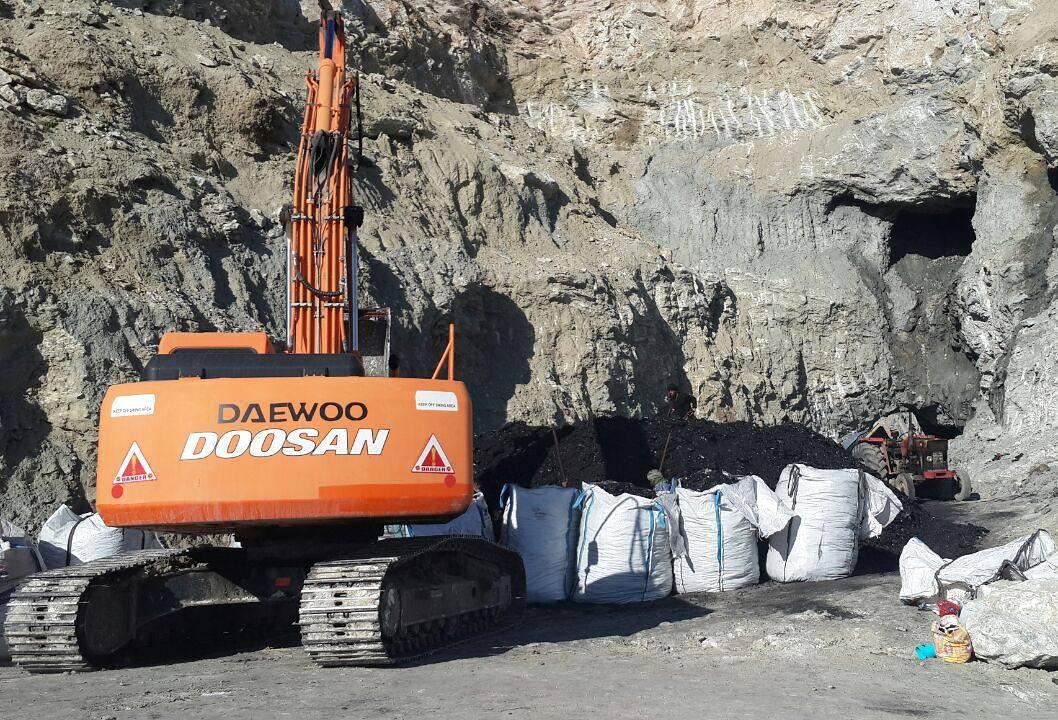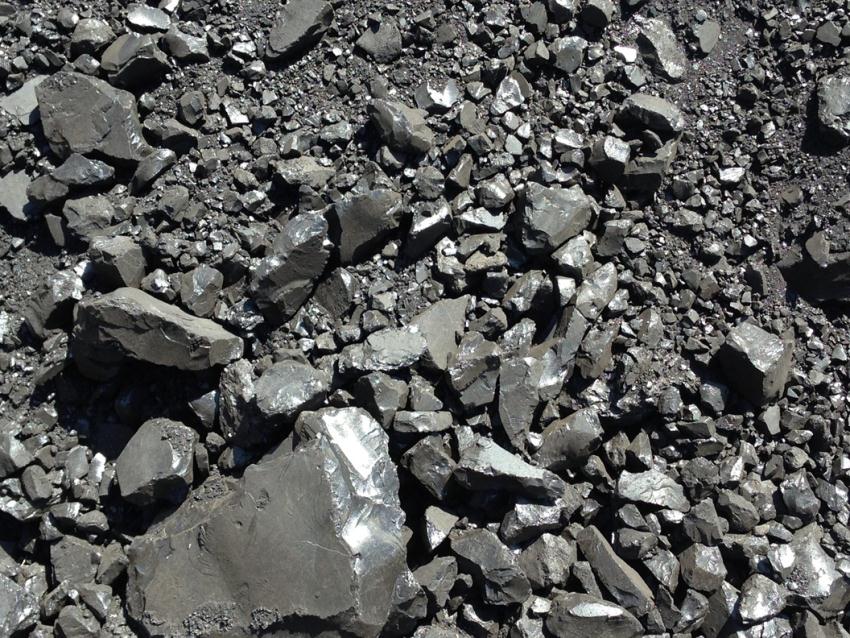
Iran Gilsonite

Iran Gilsonite supplier suitable for drilling and asphalt
Gilsonite is the naturally-occurring mixture of bitumen and mineral matter formed by oil seepages in the earth’s crust. Iran Gilsonite in rock form is available in the west of Iran between Ilam and Kermanshah and Iraq border. The first Gilsonite came from Caribbean country Trinidad and Tobago and it was contenting 55% hydrocarbon and the rest minerals. Initially, this kind of Gilsonite used as the additive in road construction. There is another origin of Gilsonite which is coming from another city in Kuhdasht belong to Lorestan province in Iran. The hydrocarbon content is much lower than Ilam and Kermanshah and it is just using for the foundry. Hydrocarbon content or bitumen content of Gilsonite from Kermanshah and Ilam is the first quality of Iran Gilsonite and the purity coming up to 98%.
These veins vary in width from several meter and to twenty meters and vary in length from a few kilometer to as much as thirty or forty km.
Some veins are believed to be fourteen hundred meters. It has been estimated that Utah has a reserve supply of sixteen million tons of this are available for commercial development.
Generally, Gilsonite is mineral hydrocarbon of asphaltite class which is a black solid of fairly bright luster and melts or fuses between 130 and 210 C. It is soluble in carbon disulfide, carbon tetrachloride, and many another non-polar organic solvent. The principal deposit of Gilsonite is found in the Gilanegharb and Ghasreshirin, Kermanshah, Iran as filling in vertical fissures in the mountain calcareous shales, limestone and sandstones.
RAHA GILSONITE Company as a major producer, supplier, and exporter of Iran Gilsonite in the Middle East is located in Iran. RAHA GROUP has a lot of experience in exporting and is very active in case of Gilsonite supplying.
Iran has many Gilsonite resources and is one of the best Gilsonite suppliers in The Middle East. RAHA GILSONITE Company has a great ability to make all necessary trading relationship with most of the Gilsonite customers in all around the world.
Iran Gilsonite in powder, micronized, granulated, lump, ore, and rock form

Iran Gilsonite is black hard resin and brittle that occurs as asphalt complexes in the border of Iran. Gilsonite ore composed mainly of NSO compounds with subordinate saturated and aromatic hydrocarbons. Gilsonite powder is a common drilling mud additive, but it also is used in asphalt paving, roofing and construction paper, paint, ink, explosive, carbon electrodes, and various fuels. At the surface, Gilsonite ore dikes range from several millimeters to more than 5m thick; some are exposed for up to 39km but most are less than 5km in length. The dike cut across various lower Eocene to Oligocene extension fractures caused by local overpressure in oil shale. RAHA Co Is Iranian Gilsonite rock mine owner and manufacturer of lump and powder in various mesh size in powder and raw type lump with application including FLC which is Fluid Loss Control additives in oil well drilling mud and filtrate control as hole stabilizer for high temperature high pressure oil well HTHP, HTLP and as bitumen modifier to mix with asphalt to improve performance and stability of bitumen. The Gilsonite is leading in roof coating, building product coating and road seal coat crack sealer suppliers. From Gilsonite, we are producing drilling fluid which is shale inhibitor in drilling fluid and reacting with shale to prevent sloughing and swelling. Gilsonite has different analyze and specification since it is mineral and coming from mine same as other minerals and used in more than 160 products, primarily in dark-colored printing inks and paints, oil well drilling muds and cement, asphalt modifiers, foundry sands additives and a wide variety of chemical products. Gilsonite is compatible with coating material, petroleum resin and oil, pitch and bitumen mixture, vegetable oil and decrease cost of material and homologue with most of the materials used in the paint, varnish, primer, mastic, enamel and enamel industry, and at the same time are also highly resistant to acid and alkali materials.
Gilsonite Application
Using of Gilsonite in heavy traffic area like junction or bus station Gilsonite using as the additive in paving on the special location of roads like the bus station or signal points and junction. Due curing of pavement because of cold or high temperature, the weight of trucks and cars, sun, rain, snow road construction companies are looking for new technology and material to use to improve crack and deformation and all above problem. RAHA GILSONITE Co supplying Natural Bitumen in the medium course and fine size and playing as resistance against fatigue and deformation. All tests showing significant improvement compared other additives. Gilsonite in permanent deformation Gilsonite is using to increase the resistance to permanent deformation and prevent shoving and rutting also cracking during cold temperature.
Gilsonite using as road pavement additives in hot mix. Gilsonite and modified Gilsonite are adding directly at the production site of the asphalt and bitumen mixing plant. To use asphalt in road construction in cold weather just use our gilsonite and no need to use any special bitumen! Just bitumen 50–70 is more than enough! Gilsonite as bitumen binder modifier Gilsonite is used as a bitumen binder modified with various properties of binder that is modified only by Gilsonite is common, we investigate the effect of combining bitumen and Gilsonite in the same base binder. Adding 13~14% gilsonite increase performance of asphalt. Also, the viscosity of modified binders by Gilsonite is always high. We are suggesting Iran Gilsonite can be used as an alternative modifier to reduce the cost of asphalt mixture production and compaction in the field. Detail of Gilsonite mixture in asphalt It has been discovered that asphalt cement can be toughened with Gilsonite and thinned with a reactive oil. Reactive oil is an oil that contains a high content of unsaturated fatty acids. By using a reactive oil, the oil would cure or react after application of the asphalt cement to the highway, thereby allowing for a lower viscosity application by curing later to prevent rutting. Gilsonite is preferably one having a melting or softening point near about 300° F. so that it is more easily softened and blended with the petroleum asphalt at such temperatures.
Gilsonite should be added slowly at the vortex. Provisions should be made to recirculate the hot bitumen through recirculation piping. The most important item is that the minimum temperature should be about 170 to 175° C. Anything significantly less than this will extend mixing time. For typical (5-10%) substitution concentrations, 2-4 hours of mixing after the addition are completed should be sufficient. For master batch concentrations (over 10% mineral bitumen) recirculation overnight is preferred.
Gilsonite powder and rock generation
Gilsonite metamorphic products of petroleum resulting from the combination of influences of time, heat and pressure. Gilsonite, in general, has been classified by Abraham on the based on animal, vegtebale and mineral. Iran Gilsonite as above condition found only in Gilanegharb Kermanshah. It is solid asphalt resembling coal very much in appearance.
Gilsonite has two types of molecules, a straight carbon, and a ringed carbon. When you heat the Gilsonite, the two components separate. The ringed carbon vaporizes and is called a volatile. A straight carbon remains and becomes the residue, or sometimes called carbon or carbon black.We are exporting the carbon in the residue form. The volatile after cooling done can be used as a fuel and fuel should be refined to segregate sulfur or other elements and add additives.
The liquid is as a raw material in petrochemical processing and a refinery feed stock for cracking into products like gasoline. Usually, Gilsonite has over 60% volatiles and under 40% residues. Typically the residue is in the 36 to 38% range. The volatiles are labeled typically as the amount “lost in ignition”.
